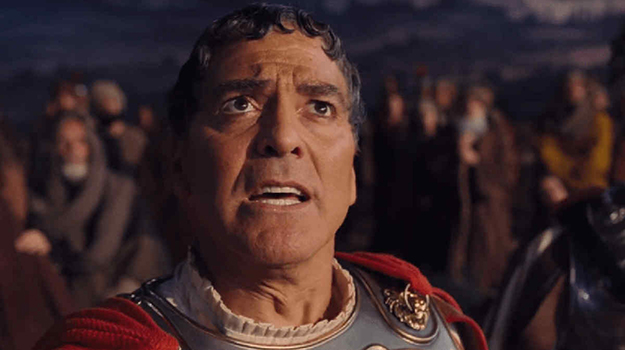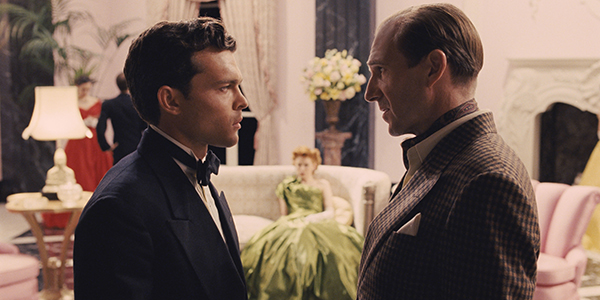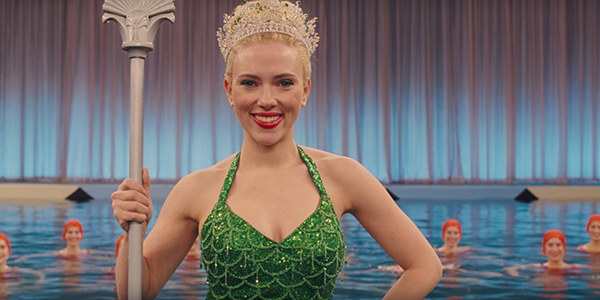The Coen Brothers are widely known for their diverse and eclectic range of films, from period dramas to westerns to absurdist comedies to neo-noirs. Their latest, “Hail, Caesar!,” is far from poor, but it is ultimately hard to place, due to its absence of many of their notable trademarks. When thinking back to it, it’s hard to justify its existence amongst the Coens’ otherwise extensive and impressive filmography.
A story with multiple arcs that ultimately lead nowhere
“Hail, Caesar” takes places in the golden age of Hollywood, sometime during the 1940s. Although advertised almost primarily as an investigation into the kidnapping of an actor named Baird Whitlock (George Clooney), the film really is more about the business of show business, specifically as it relates to life of actor “fixer” Eddie Mannix (Josh Brolin). Other than the aforementioned kidnapping, Mannix is also responsible for maintaining the good-girl image of DeeAnna Moran (Scarlett Johannson), the career of a western actor named Hobie Doyle (Alden Ehrenreich), and others.
When first introduced to all of these side characters, there is typically a scene from the production of one of their movies. When first seeing Whitlock, for example, we catch a brief glimpse of Hail Caesar, the Roman-set epic that the movie itself is named after. We then are treated to a Busby Berkeley-esque dance number to introduce DeeAnna, a classic western-style horse chase and gunfight to introduce Doyle, and then a Gene Kelly-influenced tap-dancing routine to introduce another actor named Burt Gurney (Channing Tatum).
While this all sounds wonderful, though, it ultimately becomes anything but. In an attempt to stuff as much of 1940s Hollywood into one film and yet only loosely relating the scenes to one another, “Hail, Caesar!” doesn’t strike much of a long-lasting impression at all. Individually, some scenes are amongst the Coens’ most visually striking work (the Busby Berkeley dance scene and Gene Kelly number especially). But if you were to ask me what the purpose of “Hail, Caesar!” was, it would be difficult to really provide an answer.
Take the kidnapping of Whitlock, for example. The Coen brothers obviously deceived their audience by making them believe this was the main plot of the film, but then, other than a few clever lines that are meant to parody the Hollywood blacklist scandal, the entire subplot just fizzles out. If you were to remove this entire story, the film would remain almost exactly the same, proving that it doesn’t really need to be in there at all.
An exercise in futility
The Coen brothers are known for their dark and sometimes absurd sense of humor, which is represented in some of their best works (“Fargo” or “Barton Fink” being prime examples). From the get-go, it’s easy to tell that “Hail, Caesar!” would be amongst their lighter works; yet after seeing it, the experience is not nearly as memorably funny as even a film as bleak as “Fargo.”
In one scene, Hobie Doyle is filming a drama scene, and the director of the film, named Laurence Laurentz (Ralph Fiennes), is advising him. The line “would that it were so simple” is nearly impossible for Doyle to deliver, and so, in a back-and-forth exchange, Laurentz attempts to pound the line into Doyle, but with no recognizable improvement. Though on paper the scene sounds clever, it is ultimately a cheap attempt at humor, and not nearly representative of the Coen brothers’ usually impeccable comic timing. Such an exchange represents the film as a whole; much like this back-and-forth banter, many attempts are made, but nothing really seems to stick by the end.
The lesser-seen side of Hollywood
As mentioned, “Hail, Caesar!” is mostly told through the point of view of Eddie Mannix, who is charged with the task of maintaining a positive image for his actor clients. Such a profession requires him to come up with inventive schemes, such as his attempts at preserving the pregnant DeeAnna’s innocent image to the public.
In the process of gazing into Mannix’s world, though, (and also through Brolin’s surprisingly sensitive performance), we are able to see the artificiality of Hollywood, which is often romanticized when people think back to what is now known as Hollywood’s “Golden Age.” It is a refreshing view into the seedy underbelly of the early days of filmmaking, which just may be a sly poke by the Coens at the way the industry still is today.
Conclusion
As a whole, “Hail, Caesar!” feels much like the Coen brothers’ attempt at deceiving their audience and critics alike. They have frequently established in the past that not all of their movies have to be Academy Award-worthy works of art, and some can exist purely for the purposes of entertainment. Think of the zany “Burn After Reading,” which came hot on the heels of “No Country For Old Men,” the Best Picture-winner that still remains their most celebrated film to date.
While such an abrupt switch in tone from film to film is not entirely deplorable, though, it sometimes leads to a misfire like “Hail, Caesar!” In an attempt to present a cheeky look at early 1940s Hollywood, but trying to stuff too many unrelated scenes into one mostly uninteresting storyline, the film unfortunately becomes one of their more forgettable works.



